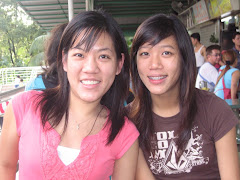
who say playing with cards is bad?
as a boy, i picked up card games like pak kow, si kee puay, teo hee and buan lak (when i was older, i learned its english name is blackjack). cash was normally not involved. our stakes included stuff like picture cards, glass marbles, bus tickets, kuti-kuti and rubber bands. the only time when we played with real money was during the three days of the lunar new year. of course, once it got started, it was a bit difficult to revert to gambling with play items.
pak kow or pa kau is known as daun tiga (three cards) in malay. it is a very straight forward card game. each one is dealt a hand of three cards. the best hand is three 10s or three picture cards. normally, if the sum total of your cards adds up to 10 points, you have a winning hand. for example, if you have a 4, a 5 and an ace, you have 10 points. you also have ten points if you have a 3, a 8 and a 9, as the total is 20 ( 2 tens). the worst hand is one where the sum total ends with 1. for example, if you are holding a 4, a 8 and a 9, it means you have the lowest point - 1.
this card game helped us to count in 10s. i believe it also enhanced our development in mental arithmetics. one look at the three cards in hand was enough for most of us to know if we had a strong or a weak hand.
the game 'teo hee' or 'fishing' also involves counting in 10s. so, if you have a 3, the corresponding card you have to look for is a 7. if you have a picture, say a jack, then you have the look for another jack. in this game, only the diamond and the heart have value. the spade and the clover do not count. it involves some thinking and planning ahead.
buan lak or twenty-one is a card game where each player receives two cards in the initial round. the first card is open (faces up) and the second and subsequent cards are closed (face down). you can stop at two cards or you can play up to a maximum of five cards. however, when you have a buan lak (blackjack), you have to declare it by showing both cards.
what did this card game teach us? it taught us how to strategise, but more importantly, it also taught us how to apply the law of probability. even though at that time we were not aware of such a subject or topic of study, we were already into guessing the chances of getting a small value card and a big value card. we also had to guess the uncovered card of the dealer, to help us decide whether to stop at a certain point or to go for more cards.
the other card game is si kee puay or chi kee pai. in malay, it is known as daun empat (four cards). this card game incorporates a bit of poker and a bit of everything. you received four cards and then you placed them in sets of two. the first must not be stronger than the second set. it required thinking and strategising to present a hand that would be stronger than the dealer's.
i feel, after all these years, that my card playing days had helped me in developing my mental arithmetics to some extent.






















































